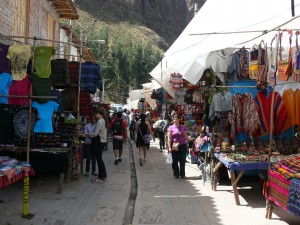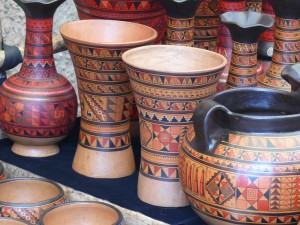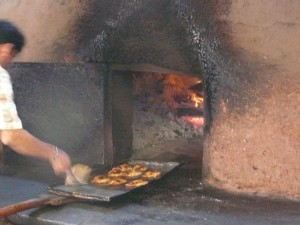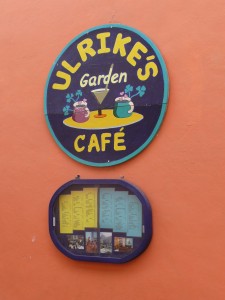Pisac Market and Ruins – A Must for Any Peru Vacation
August 25, 2012Machu Picchu is one of the most famous tourist attractions in Peru – if not South America, but interestingly one of the most commonly requested places to visit is the town of Pisac. Located in the Sacred Valley, a rural farming region about 1 hour to the city of Cusco, Pisac is a traditional and rustic Andean village that draws hundreds of foreign visitors every day.
Founded on the valley floor in the 1570s by Viceroy Toledo – the Spanish conquistador, the town of Pisac sits at the foot of an original Inca settlement. Strategically built next to the Urubamba River, the village has now grown to cover a large portion of the valley floor on both sides of the river. The original part of the village is set around a small central plaza that features a pisonay (erythrina falcate) tree surrounded by a series of narrow straight streets, in a grid like system.
The artisan market at Pisac is now world famous, and although held every day, the largest market is held on Sundays, where the stalls start from the main plaza and spread into the inclined streets – leading to the foot of the mountain. There are literally hundreds of individual vendors, whose market stalls engulf the streets of the town in a blanket of tables, knitted products and plastic tarpaulins. Although many of the vendors sell similar products: knitted scarfs, trinkets, jewellery, alpaca jumpers, clothing and ceramics etc. there are some stalls which sell unique quality products which make excellent gifts or personal purchases.
You should be prepared to bargain for your purchases, and most market vendors are well adverse to a few numbers in the English language. Negotiate your purchases down a few soles, ensuing that you get the best price for product, and remember that it is part of the buying process in Peru.
A path leading away from the market towards to the mountain will take you to the start of the ascent which slowly winds up to the Inca ruins at Pisac. This route to the ruins is for the adventurous, and you need to allow 2 -3 hours to make the trek, as the ruins are located at the top of the mountain. A more relaxing way to visit the ruins (and one which I prefer) is to take a taxi via the rear of the mountain along a road which takes you to the very top, here you can descend through the ruins (1h30 – 2 hours). To enter the Pisac ruins you will need to purchase an entrance ticket (about S/. 40) or show your Cusco Tourist Ticket, also known in Spanish as the Boleta Turistica Cusco (BTC).
ENTERTAINMENT TIP: If looking for fun at night, or to watch sports during the day, or even a taste of home, visit the Wild Rover Hostel Cusco for great food, sports and beer! Entrance to their bar is free even for non-guests
Most visitors who take a guided tour of Pisac ruins will only visit the start of the complex, but if you have the time the best part is actually located about 30-40 minutes down the mountain. The complex is spread over a large area, most of which is made up of vast agricultural terracing, but about two-thirds of the way down the mountain, at the convergence of three valley’s Is the Royal sector, which boasts a moon temple of a quality which is similar to that found at Machu Picchu.
Pisac can easily be visited as part of a day trip from Cusco, but if you are looking for accommodations closer to the ruins, there are many options available. Pisac itself has only a few (not particularly good) hotels, with the majority of good Sacred Valley hotels located about 40 minutes away in the neighbouring town of Urubamba. Here you will find a plethora of hotels from mid-range accommodations through to high-end luxury properties. Notable hotels include the Orient Express Rio Sagrado Hotel, the Tambo del Inca Hotel and Spa, the garden hotel of the Sol y Luna and the be

If you are spending the full day in Pisac and want to include lunch in a local restaurant, the options are also somewhat limited, but there are a few restaurants that you may want to check-out. Around the plaza you will find a couple of local restaurants which offer reasonably priced menus, and even a Pizza restaurant called the Blue Llama Cafe, but my personal recommendation is the Dutch owned Ulrikes Restaurant, a pleasant eatery set over 3 floors, offering well priced delicious daily set menus of well-cooked local and international cuisine. If you just want a quick snack, be sure to head to the main community oven located on the south-westerly corner of the plaza, where they serve freshly cooked meat, chicken and cheese empanadas straight-out of the gigantic adobe oven.
A visit to Pisac is a must on any Peru vacation, and is certainly worth more than a passing visit. If you have the time, I highly recommend that you take at least one full day to visit both the Pisac market and the magnificent ruins.
For further reading also see another superb article about Pisac Market written by Annie Irving, our guest writer and photographer, entitled Pisac: more than just Inca Ruins.
YOU MAY LIKE

Lima to Machu Picchu – Agencies DON’T want you to read this!

#1 Rated Day Trips From Lima To Unforgettable Destinations
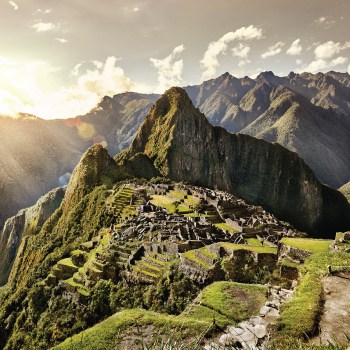
Everything You Need to Know to Avoid the Typical Tourist Mistakes At Machu Picchu

What NOT To Do When Visiting Rainbow Mountain
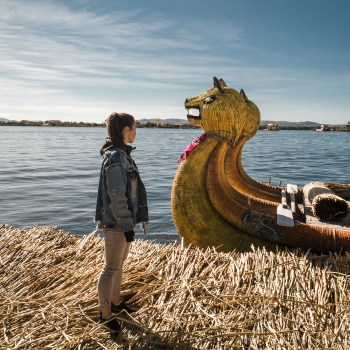
Spend 50% less and see 100% more in Peru
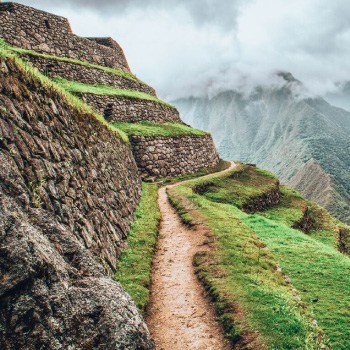
Machu Picchu Tickets – All You Need To Know!

These Hidden Destinations Just Outside Of Lima Will Blow Your Mind!

Peru – How to Avoid Being a Typical Tourist

OFFICIAL: This Company Was Voted The Best Way To Get Around Peru
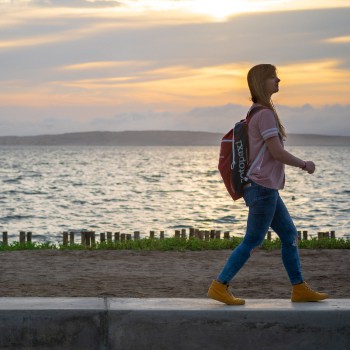
Peruvian Travel Secrets That Only The Locals Know
Leave A Reply
You must be logged in to post a comment.


